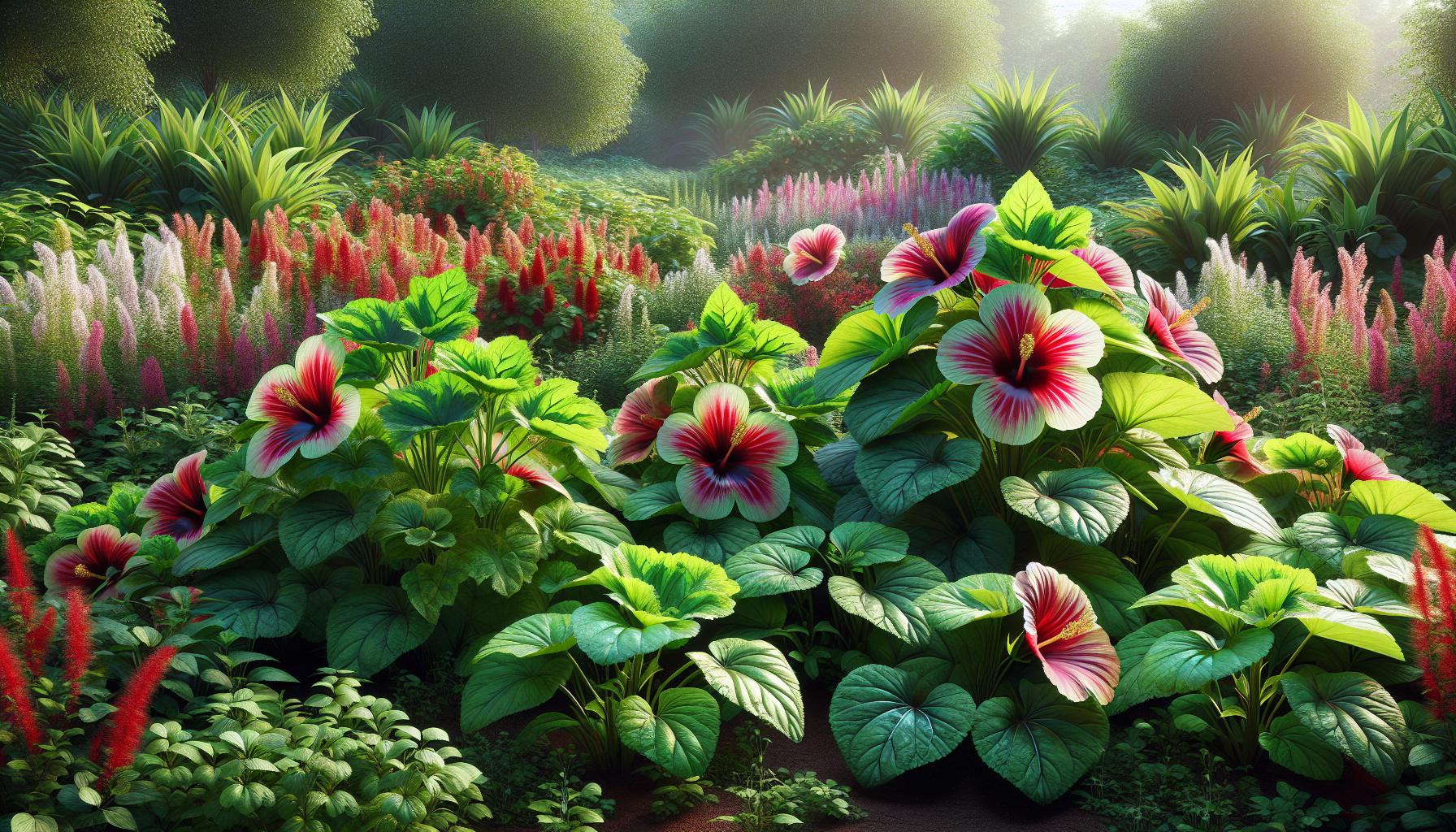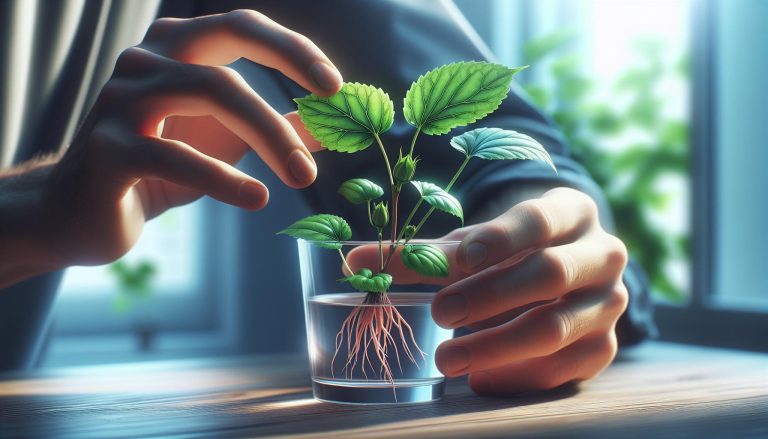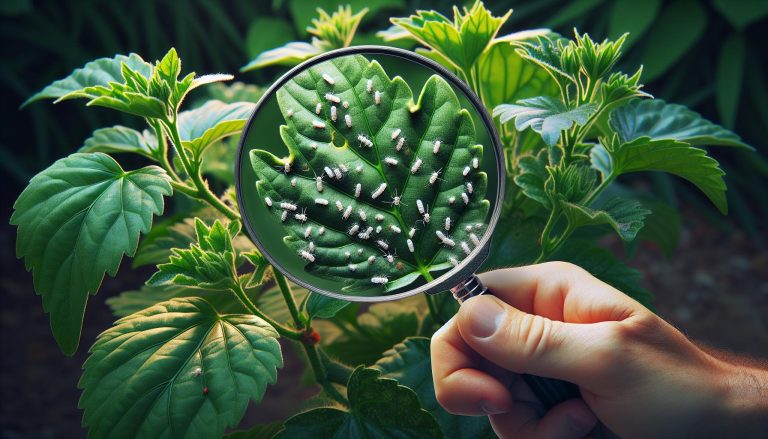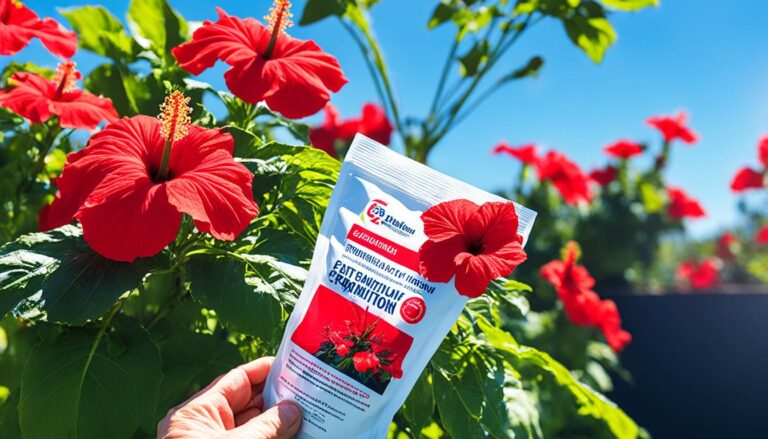Sorrel vs Hibiscus: Unveiling Key Differences in Flavor, Health Benefits, and Cultivation
Have you ever wondered about the difference between sorrel and hibiscus? As a gardening enthusiast, I’ve often found these two plants confused for one another. While they share some similarities, they’re distinct in their own right.
Sorrel and hibiscus both boast vibrant colors and tangy flavors, making them popular choices for teas, culinary dishes, and ornamental gardens. But what sets them apart? From their botanical classifications to their unique uses, there’s more to these plants than meets the eye. In this article, I’ll explore the key differences and similarities between sorrel and hibiscus, helping you appreciate their individual qualities and make informed choices for your garden or kitchen.
What Are Sorrel and Hibiscus?
Sorrel and hibiscus are two distinct plants with vibrant characteristics and versatile uses. Both are prized for their culinary applications and ornamental value in gardens.
Sorrel: An Overview
Sorrel, scientifically known as Rumex acetosa, is a perennial herb belonging to the Polygonaceae family. It’s characterized by:
- Arrow-shaped leaves with a tangy, lemony flavor
- Small, reddish-green flowers growing in clusters
- Height ranging from 1 to 3 feet
- Preference for cool, moist environments
Culinary uses of sorrel include:
- Adding a zesty punch to salads
- Creating flavorful soups and sauces
- Brewing refreshing teas
In my garden, I’ve found sorrel to be a low-maintenance plant that thrives in partial shade. It’s a welcome addition to any herb garden, offering both visual appeal and culinary versatility.
Hibiscus: An Overview
Hibiscus, part of the Malvaceae family, is a diverse genus comprising hundreds of species. Key features include:
- Large, showy flowers in various colors (red, pink, white, yellow)
- Broad, toothed leaves
- Height varying from 3 to 15 feet, depending on the species
- Tropical or subtropical origin for most varieties
Popular uses for hibiscus:
- Brewing tart, ruby-red teas
- Creating vibrant natural dyes
- Enhancing landscape designs with eye-catching blooms
| Characteristic | Sorrel | Hibiscus |
|---|---|---|
| Family | Polygonaceae | Malvaceae |
| Primary Use | Culinary | Ornamental/Beverage |
| Flower Size | Small | Large |
| Leaf Shape | Arrow-shaped | Broad, toothed |
| Typical Height | 1-3 feet | 3-15 feet |
I’ve grown several hibiscus varieties over the years, and their stunning flowers never fail to impress. While they require more care than sorrel, the visual impact they bring to a garden is unmatched.
Botanical Characteristics
Sorrel and hibiscus, while often confused, have distinct botanical features that set them apart. Let’s explore the unique characteristics of each plant.
Sorrel Plant Features
Sorrel, or Rumex acetosa, is a perennial herb with arrow-shaped leaves and a tart flavor. Its key features include:
- Leaves: Long, arrow-shaped, and bright green
- Stems: Slender and reddish
- Flowers: Small, reddish-green clusters
- Height: Typically 1-2 feet tall
- Root system: Deep taproot
- Growth habit: Clump-forming
Sorrel thrives in cool, moist conditions and prefers partial shade. It’s a low-maintenance plant that’s easy to grow in most garden soils.
Hibiscus Plant Features
Hibiscus, a diverse genus in the Malvaceae family, boasts striking flowers and lush foliage. Its distinctive traits include:
- Leaves: Large, glossy, and often lobed
- Stems: Woody in perennial varieties
- Flowers: Large, showy, with 5 petals and a prominent stamen column
- Height: Varies by species, from 2-15 feet
- Root system: Fibrous
- Growth habit: Upright, bushy
Hibiscus plants love warm, humid conditions and full sun. They’re more demanding than sorrel, requiring rich, well-draining soil and regular care to thrive.
| Feature | Sorrel | Hibiscus |
|---|---|---|
| Leaf shape | Arrow-shaped | Lobed or oval |
| Flower size | Small | Large |
| Sun preference | Partial shade | Full sun |
| Maintenance | Low | Moderate to high |
| Primary use | Culinary | Ornamental |
I’ve found that sorrel’s hardy nature makes it a great addition to herb gardens, while hibiscus’s showstopping blooms can be the centerpiece of any landscape design. Both plants offer unique features that can enhance your garden’s diversity and appeal.
Culinary Uses
Sorrel and hibiscus offer distinct flavors and applications in the kitchen. While sorrel adds a tangy zest to dishes, hibiscus brings a tart-sweet profile to beverages and desserts. Let’s explore their culinary uses in more detail.
Cooking with Sorrel
Sorrel’s lemony taste makes it a versatile ingredient in various dishes. I’ve found it adds a bright, acidic note to salads, soups, and sauces. Here are some popular ways to use sorrel in cooking:
- Salads: Raw sorrel leaves provide a zesty kick to mixed greens
- Soups: French sorrel soup is a classic spring dish
- Sauces: Blend sorrel with butter or cream for a tangy sauce for fish or chicken
- Pesto: Use sorrel instead of basil for a unique twist on traditional pesto
- Garnish: Finely chopped sorrel leaves add flavor to eggs, potatoes, or grilled meats
Pro tip: Cook sorrel briefly to preserve its bright green color and tangy flavor. Prolonged cooking can turn the leaves brown and bitter.
Brewing Hibiscus Tea
Hibiscus flowers create a vibrant, ruby-red tea with a tart-sweet flavor. Here’s how to brew a perfect cup of hibiscus tea:
- Use 2 teaspoons of dried hibiscus flowers per cup of water
- Bring water to a boil and pour over the flowers
- Steep for 5-10 minutes, depending on desired strength
- Strain and sweeten to taste
Hibiscus tea benefits:
| Benefit | Description |
|---|---|
| Antioxidants | Rich in vitamin C and anthocyanins |
| Blood pressure | May help lower high blood pressure |
| Refreshing | Serve hot or cold for a caffeine-free beverage |
Culinary uses for hibiscus extend beyond tea:
- Cocktails: Add hibiscus syrup to mixed drinks for color and flavor
- Jellies and jams: Use hibiscus to create vibrant, tart preserves
- Desserts: Incorporate dried hibiscus flowers in cakes, cookies, or ice cream
- Sauces: Create a hibiscus glaze for meats or vegetables
Remember, hibiscus’s tart flavor pairs well with sweet or spicy ingredients, creating balanced and interesting flavor profiles in both sweet and savory dishes.
Nutritional Profiles
Sorrel and hibiscus offer distinct nutritional benefits, each contributing unique elements to a healthy diet. Let’s explore the specific health advantages of these plants.
Sorrel’s Health Benefits
Sorrel packs a nutritional punch with its high vitamin C content. A 100-gram serving provides 48 mg of vitamin C, boosting immune function and collagen production. It’s also rich in:
- Vitamin A: Supports eye health and immune function
- Potassium: Regulates blood pressure and aids muscle function
- Iron: Essential for oxygen transport in the blood
- Magnesium: Supports bone health and energy production
Sorrel’s oxalic acid content gives it its tangy flavor but may be a concern for those prone to kidney stones. Moderate consumption is key.
Hibiscus’s Health Benefits
Hibiscus tea, made from dried calyces, offers numerous health benefits:
- Antioxidants: Rich in anthocyanins, which combat free radicals
- Blood pressure: May help lower high blood pressure
- Cholesterol: Studies suggest it can reduce bad LDL cholesterol
- Weight management: May aid in weight loss efforts
Hibiscus contains:
- Vitamin C: Boosts immune function
- Minerals: Including calcium and iron
- Organic acids: Citric acid, malic acid, and tartaric acid
While generally safe, hibiscus can interact with certain medications. It’s best to consult a healthcare provider before adding it to your diet regularly.
Flavor Profiles
The taste experiences of sorrel and hibiscus are distinct, offering unique contributions to culinary creations. Let’s explore the flavor profiles of these two plants to understand their individual characteristics.
Taste of Sorrel
Sorrel’s flavor is predominantly tart and lemony. It’s known for its bright, acidic taste that can add a zesty punch to dishes. The sourness comes from oxalic acid, which gives sorrel its distinctive tang. Here’s a breakdown of sorrel’s flavor profile:
- Primary taste: Tart and lemony
- Secondary notes: Slightly grassy or vegetal
- Texture: Crisp and tender when fresh
- Intensity: Strong, can be overpowering if used in large quantities
Sorrel’s flavor is often compared to:
- Sour green apples
- Unripe strawberries
- Lemon juice
In cooking, sorrel’s tartness can be balanced with:
- Creamy ingredients (butter, cream, cheese)
- Sweet elements (honey, sugar)
- Fatty proteins (fish, poultry)
Taste of Hibiscus
Hibiscus offers a complex flavor profile that’s both tart and fruity. Its taste is often described as cranberry-like, with floral undertones. Here’s a breakdown of hibiscus’s flavor characteristics:
- Primary taste: Tart and berry-like
- Secondary notes: Floral, slightly sweet
- Texture: Smooth when brewed as a tea
- Intensity: Bold, with a lingering aftertaste
Hibiscus flavor is often likened to:
- Cranberries
- Pomegranates
- Red currants
In culinary applications, hibiscus pairs well with:
- Citrus fruits (lemon, lime, orange)
- Berries (strawberries, raspberries)
- Spices (cinnamon, ginger, cloves)
Flavor comparison table:
| Characteristic | Sorrel | Hibiscus |
|---|---|---|
| Primary Taste | Tart, lemony | Tart, berry-like |
| Secondary Notes | Grassy | Floral, sweet |
| Intensity | Strong | Bold |
| Common Uses | Sauces, soups | Teas, beverages |
Both sorrel and hibiscus bring unique flavors to the table, allowing for creative culinary applications. Their tartness can be harnessed to add depth and complexity to a variety of dishes and beverages.
Cultural Significance
Sorrel and hibiscus hold deep cultural importance in various traditions worldwide. Their uses extend beyond culinary applications, often intertwining with folklore, medicine, and celebrations.
Sorrel in Traditional Practices
Sorrel’s cultural significance spans continents. In European folklore, it’s associated with good fortune and protection. Caribbean cultures embrace sorrel during Christmas, brewing it into a festive drink. In some African traditions, sorrel symbolizes resilience and adaptability.
Traditional medicine systems value sorrel for its healing properties:
- Ayurveda: Used to treat fever and inflammation
- Chinese medicine: Believed to detoxify the liver
- Native American practices: Applied to treat scurvy and skin conditions
Sorrel also plays a role in culinary traditions:
- French cuisine: Essential ingredient in classic sauces
- Eastern European dishes: Featured in soups and stews
- Caribbean recipes: Key component in holiday beverages
Hibiscus in Traditional Practices
Hibiscus flowers carry profound cultural meaning across societies. In Hawaii, they symbolize beauty and royalty. Hindu traditions associate hibiscus with Kali and Ganesha, using the flowers in religious rituals. Ancient Egyptians valued hibiscus tea as a pharaoh’s beverage.
Hibiscus features prominently in traditional medicine:
- Traditional Chinese Medicine: Used to treat liver disorders and high blood pressure
- Ayurvedic practices: Believed to promote hair growth and skin health
- African folk medicine: Applied to manage fever and inflammation
The cultural impact of hibiscus extends to cuisine and celebrations:
- Mexican cuisine: Agua de Jamaica (hibiscus tea) is a popular beverage
- Middle Eastern traditions: Karkade (hibiscus drink) is served hot or cold
- West African cultures: Hibiscus is used in traditional wedding ceremonies
Both sorrel and hibiscus continue to play significant roles in modern cultural practices, bridging ancient traditions with contemporary uses.
Growing and Cultivation
Sorrel and hibiscus have distinct growing requirements and cultivation methods. Both plants thrive in specific conditions, requiring careful attention to soil, sunlight, and watering practices.
Sorrel Gardening Tips
Sorrel thrives in cool, moist conditions. I plant it in well-drained soil with a pH between 5.5 and 6.8. It needs full sun to partial shade, with 4-6 hours of direct sunlight daily. I space plants 12-18 inches apart to allow for growth.
Key tips:
- Sow seeds 1/4 inch deep in spring or fall
- Water regularly, keeping soil consistently moist
- Mulch to retain moisture and suppress weeds
- Harvest outer leaves frequently to promote growth
- Divide plants every 3-4 years to maintain vigor
Sorrel’s hardy nature makes it low-maintenance, but watch for bolting in hot weather. I pinch off flower stalks to extend the harvest season.
Hibiscus Gardening Tips
Hibiscus plants prefer warm, humid environments. I plant them in rich, well-draining soil with a pH of 6.5-7.0. They need full sun, at least 6 hours daily, for optimal blooming.
Essential practices:
- Plant in spring after last frost
- Space plants 3-6 feet apart, depending on variety
- Water deeply and regularly, especially during dry spells
- Fertilize monthly during growing season
- Prune in late winter or early spring to shape and promote growth
Hibiscus care varies by species. Tropical varieties need winter protection, while hardy types withstand colder temperatures. I’ve found that consistent moisture and proper fertilization are key to vibrant blooms.
| Plant | Soil pH | Sunlight | Spacing | Watering |
|---|---|---|---|---|
| Sorrel | 5.5-6.8 | 4-6 hours | 12-18 inches | Keep moist |
| Hibiscus | 6.5-7.0 | 6+ hours | 3-6 feet | Deep, regular |
Both plants benefit from organic matter in soil and proper drainage. I’ve learned that attentive care during establishment leads to robust, long-lasting plants.
Key Differences Between Sorrel and Hibiscus
Sorrel and hibiscus, while often confused, have distinct characteristics that set them apart. Here’s a breakdown of their key differences:
Plant Family and Species:
- Sorrel: Belongs to the Polygonaceae family, genus Rumex
- Hibiscus: Member of the Malvaceae family, genus Hibiscus
Appearance:
- Sorrel: Herbaceous perennial with arrow-shaped leaves
- Hibiscus: Woody shrub or small tree with large, showy flowers
Edible Parts:
- Sorrel: Leaves are primarily used
- Hibiscus: Flowers and calyces are the main edible parts
Flavor Profile:
- Sorrel: Tart, lemony taste
- Hibiscus: Sweet-tart, cranberry-like flavor
Growing Conditions:
- Sorrel: Prefers cool, moist environments
- Hibiscus: Thrives in warm, humid climates
Culinary Uses:
- Sorrel: Soups, sauces, salads
- Hibiscus: Teas, jams, syrups, garnishes
Nutritional Content:
| Nutrient | Sorrel | Hibiscus |
|---|---|---|
| Vitamin C | High | Moderate |
| Antioxidants | Moderate | High |
| Oxalic Acid | High | Low |
Medicinal Properties:
- Sorrel: Diuretic, laxative effects
- Hibiscus: Potential to lower blood pressure, aid digestion
Cultural Significance:
- Sorrel: Used in European and Caribbean cuisines
- Hibiscus: Popular in Middle Eastern, African, and Mexican traditions
- Sorrel: Limited, mainly grown for culinary use
- Hibiscus: Highly prized for its beautiful, large flowers
Understanding these differences helps in selecting the right plant for your garden or culinary needs. I’ve found that growing both adds variety to my garden and kitchen.
Conclusion
Sorrel and hibiscus offer unique qualities that enrich our gardens culinary experiences and cultural traditions. While they share some similarities their distinct characteristics make them valuable in different ways. Whether you’re looking to add a tart flavor to your dishes with sorrel or create a vibrant floral tea with hibiscus these plants have much to offer. I hope this comparison has helped you appreciate the nuances between sorrel and hibiscus and inspired you to explore their potential in your own garden or kitchen. Remember to consider their specific growing needs and cultural significance as you incorporate these versatile plants into your life.







